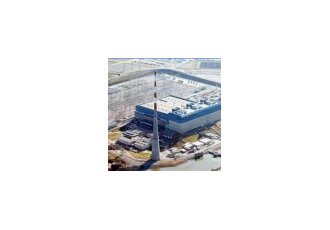
28 août 2014
Areva est l’entreprise responsable du composant défaillant. Le défaut se situe dans l’entrée qui calcule le ratio de puissance critique minimale et les limites de chaleur pour la production de courant de Browns Ferry 2. Seul ce réacteur serait concerné. Le problème pourrait affecter le réacteur fonctionnant entre 25 et 30 % de sa puissance nominale. La limite de sécurité thermique du combustible pourrait alors être dépassée. La solution d’attente consiste à éliminer la plage de fonctionnement de 25 à 30 %.
Type : Fukushima I (BWR Mark I) - Puissance : 3 458 MWth - Première divergence : 07/1974
Available in english only.
Event Number : 50507
Rep Org : AREVA INC. - Licensee : AREVA INC.
State : WA County : License # : Agreement : Y
Event Date : 08/28/2014 - Event Time :
Emergency Class : NON EMERGENCY 10 CFR Section : 21.21(d)(3)(i) - DEFECTS AND NONCOMPLIANCE
Event Text
PART 21 - DEFECT IN THE INPUT TO CALCULATE THERMAL LIMITS
The following was received via email by Areva Inc. :
"(I) Name and address of the individual or individuals informing the Commission. Alan B. Meginnis, AREVA Inc., 2101 Horn Rapids Road, Richland, WA 99354.
"(II) Identification of the facility, the activity, or the basic component supplied for such facility or such activity within the United States which fails to comply or contains a defect. The defect is in the input to a program that calculates the minimum critical power ratio (MCPR) and linear heat generation rate (LHGR) thermal limits for Browns Ferry Unit 2 Cycle 18.
"(III) Identification of the firm constructing the facility or supplying the basic component which fails to comply or contains a defect. AREVA Inc.
"(IV) Nature of the defect or failure to comply and the safety hazard which is created or could be created by such defect or failure to comply. This issue is a defect as defined in 10 CFR 21.3. The error is an omission in the POWERPLEX core monitoring software system input that could result in the application of non-conservative nuclear fuel operating thermal limits when the reactor is operated at 25 to 30% power. In the event of an abnormal operational occurrence while operating in this power range, a fuel thermal safety limit could be exceeded.
"(V) The date on which the information of such defect or failure to comply was obtained. August 28, 2014
"(VI) In the case of a basic component which contains a defect or fails to comply, the number and location of these components in use at, supplied for, being supplied for, or may be supplied for, manufactured, or being manufactured for one or more facilities or activities subject to the regulations in this part. The defect exists only for Browns Ferry Unit 2 Cycle 18.
"(VII) The corrective action which has been, is being, or will be taken ; the name of the individual or organization responsible for the action ; and the length of time that has been or will be taken to complete the action. AREVA Inc. recommended plant operations be restricted to provide enough margin to the MCPR and LHGR thermal limits anytime power is in the range 25% < P < 30%. AREVA has also provided revised POWERPLEX input to TVA for Browns Ferry Unit 2 Cycle 18 to correct the error permanently.
"(VIII) Any advice related to the defect or failure to comply about the facility, activity, or basic component that has been, is being, or will be given to purchasers or licensees. This defect only had the potential to exceed the safety limit minimum critical power ratio (SLMCPR) and/or one of the Specified Acceptable Fuel Design Limits if an AOO [anticipated operational occurrence] occurred during the brief periods the plant was at power levels in the range 25% < P < 30% during Cycle 18. The plant has not had any such events in Cycle 18. The identified defect is a human performance error impacting only Browns Ferry Unit 2 Cycle 18. It does not affect other operating cycles, Browns Ferry Units, or other nuclear plants."